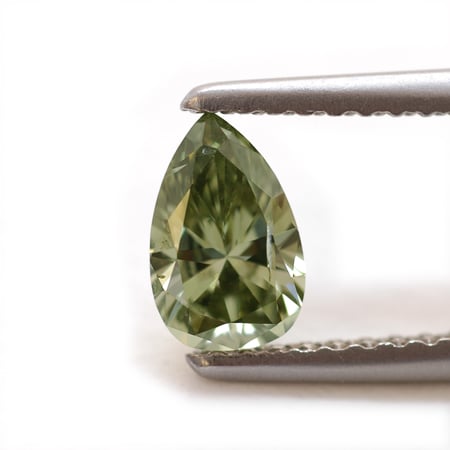Diamond Specialist Certification Course
Understanding Chameleon Diamonds
Purchase Diamond Specialist Certification Course
Learn the fundamentals of diamonds — from optical and physical properties to grading and ethical and legal issues. Learn to distinguish natural diamonds from synthetics and diamond simulants. Keep the kit, which includes one natural, jewelry-grade diamond. If you successfully pass the quiz and gem identification test, then you will be an IGS-certified Diamond Specialist.Answer: Chameleon diamond does indeed exist, as do other types of color change diamonds. They number among the rarest types of diamonds.
A Classic Chameleon Diamond
Chameleon diamonds actually change color. Some turn from a stable yellowish green to yellow. This color change can be observed by keeping the diamond in the dark, for at least 24 hours, or heating it to 200-300° C. It will take on an unstable yellow color. When the diamond is brought into the light or the heat source removed, it will revert to its stable yellowish green color in a few minutes. This is an example of a "classic" chameleon diamond. Some diamonds change from a stable yellow to green when heated, though not when kept in the dark. These are sometimes called "reverse" chameleon diamonds.
The exact molecular basis for this phenomenon in these hydrogen-rich diamonds is not well understood. You can try reading A Green Diamond: A Study of Chameleonism, edited by Derek Content.
Gary Dutton, PhD., GG
More Color Change Diamonds
Please note that there are some "alexandrite effect" color change diamonds that have a slight change depending on the light conditions. However, this isn't quite the same as a chameleon diamond. For example, one famous diamond formerly owned by Pedro II, Emperor of Brazil, is yellow-brown in incandescent light but intense green in sunlight, because of the green luminescence caused by daylight. The 50+ carat Tavernier pear-shaped diamond is also an alexandrite-type color changer. It displays light brown color in incandescent light but light pink in sunlight.
I worked on the Diamonds exhibition at the Muséum National d'Histoire Naturelle in Paris in 2001. We had some of the world's largest chameleon diamonds on display. One was over 30 carats but stuck in its green color. It was too difficult to get it to change color on demand. Ten feet away was a 50+ carat chameleon diamond, stuck half-way between violet and orange colors.
Michael Hing
International Gem Society
Never Stop Learning
When you join the IGS community, you get trusted diamond & gemstone information when you need it.
Get Gemology Insights
Get started with the International Gem Society’s free guide to gemstone identification. Join our weekly newsletter & get a free copy of the Gem ID Checklist!
